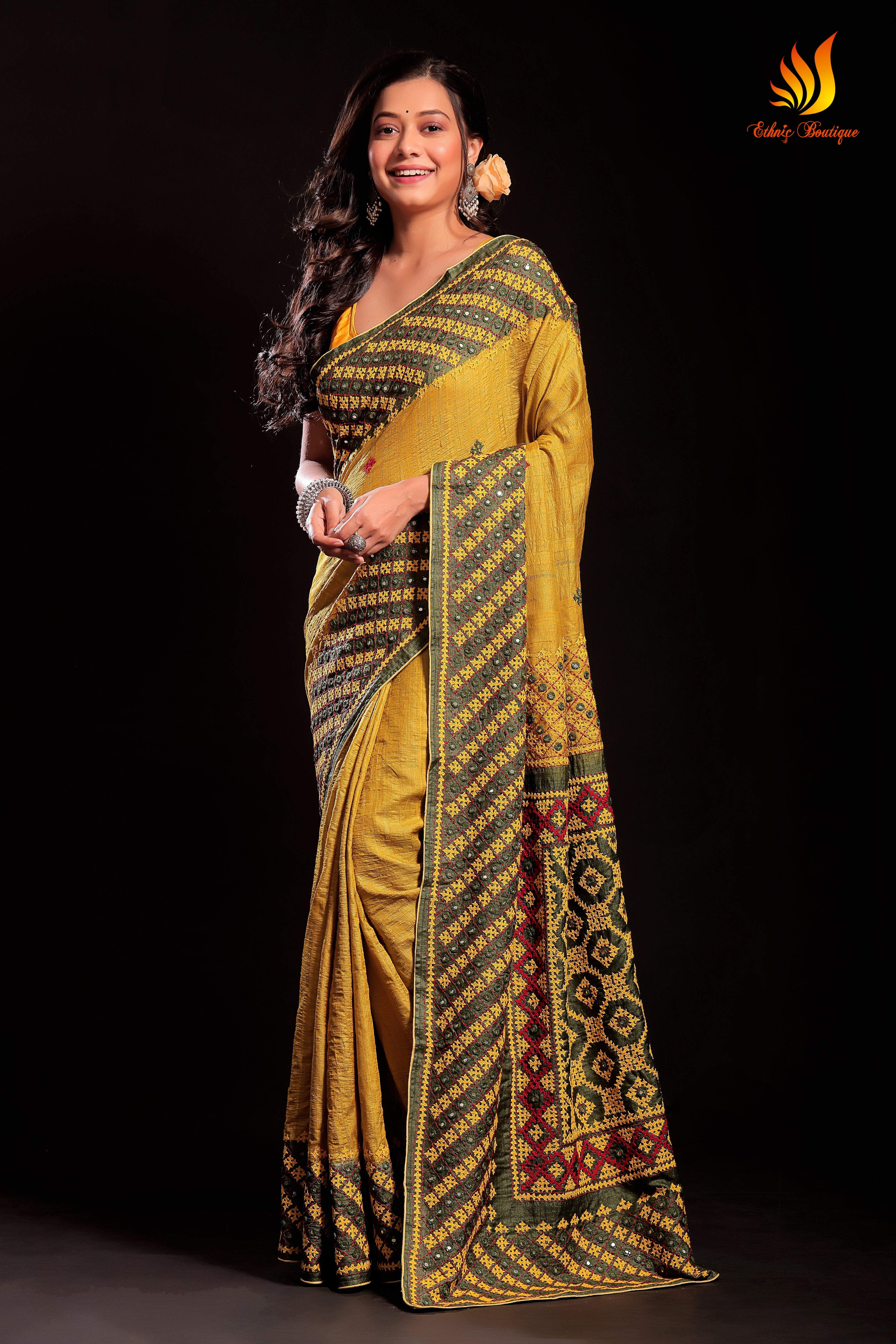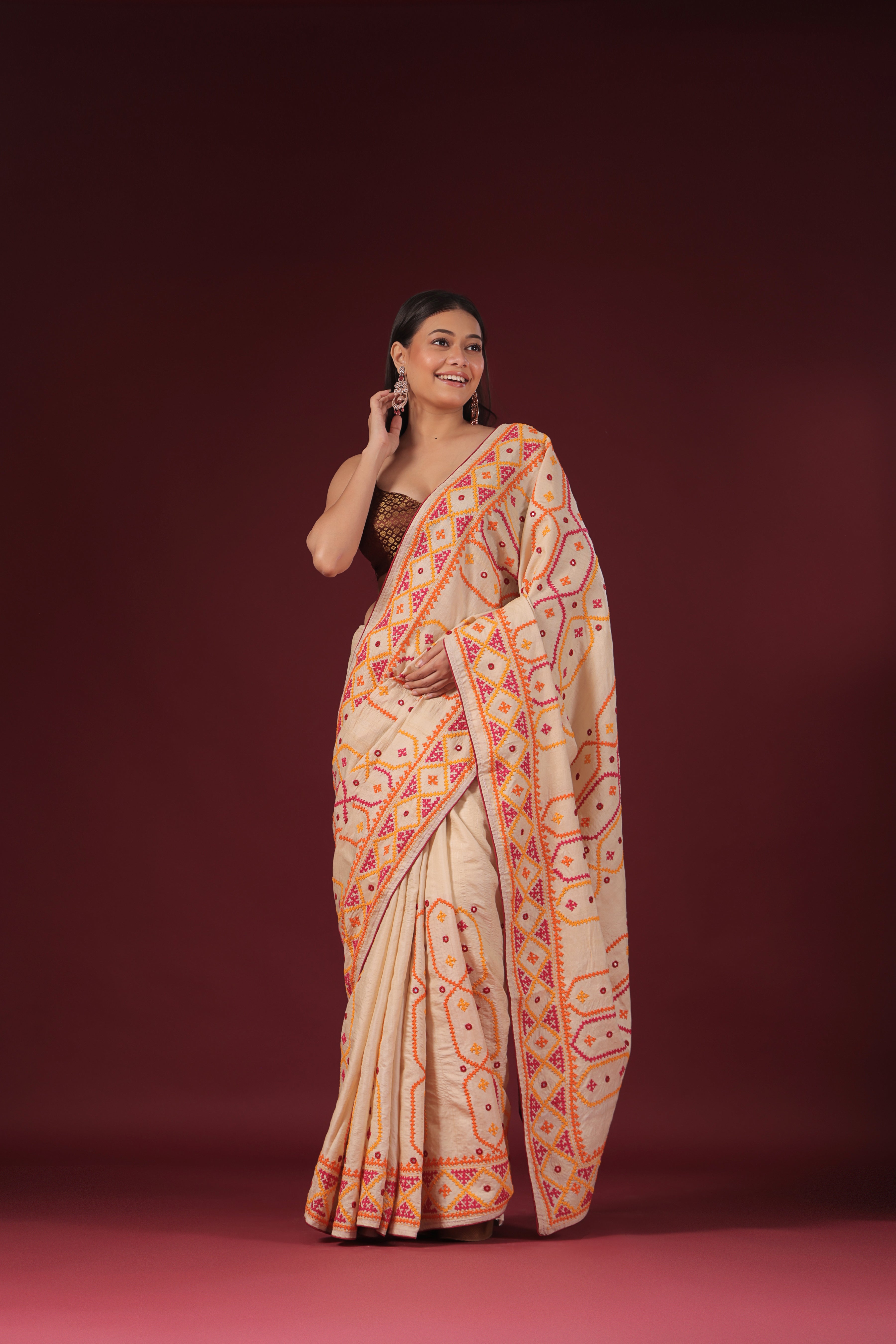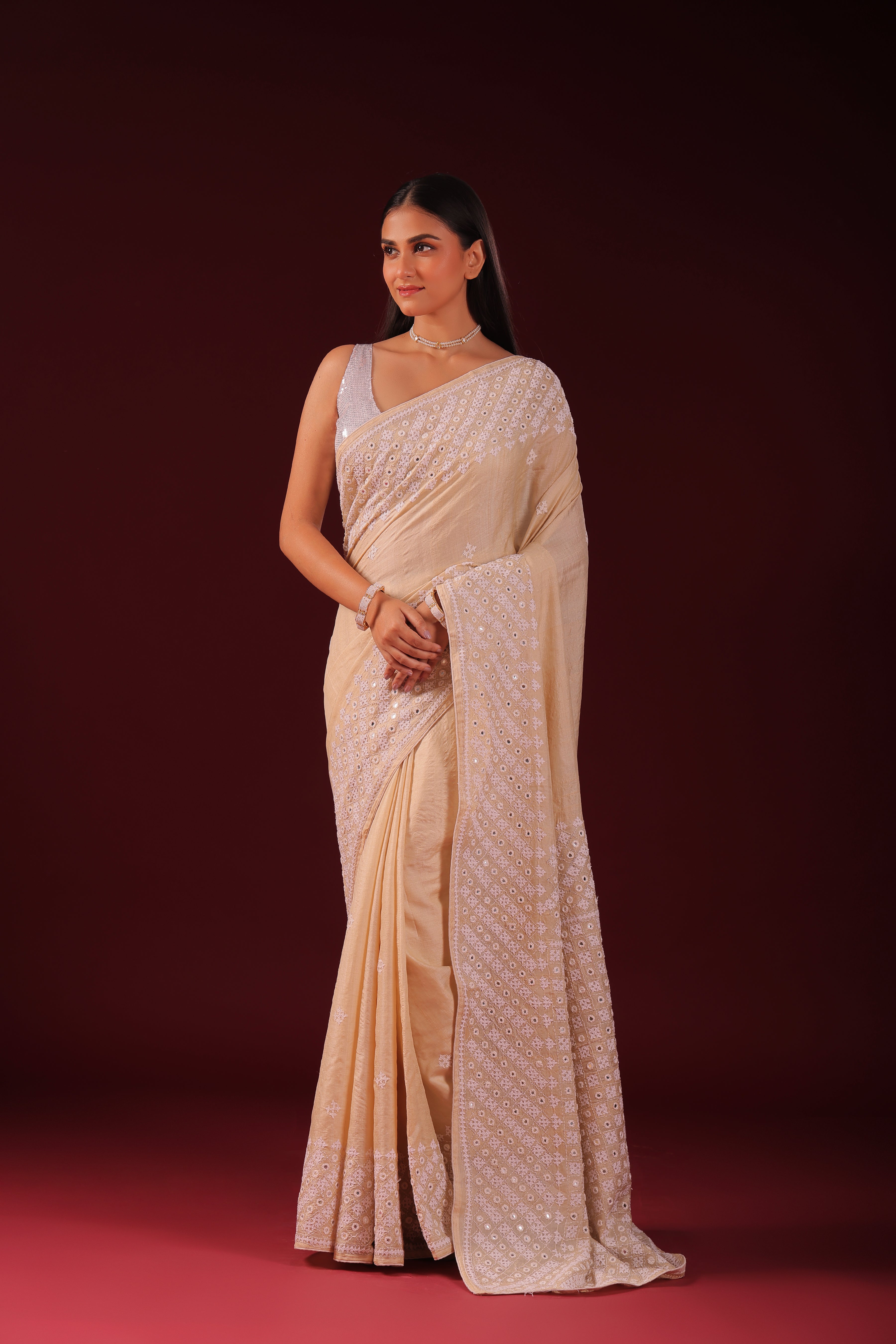Tussar Gujarati refers to the traditional use of Tussar silk in Gujarati textiles, which are known for their rich and intricate handwoven fabrics, especially sarees. Tussar silk, also known as Kosa silk, is a type of wild silk that has a slightly coarser texture than mulberry silk, and it has a natural golden hue. The combination of Tussar silk with the traditional Gujarati weaving techniques creates beautiful, textured fabrics that are highly prized.
Key Features of Tussar Gujarati:
-
Tussar Silk:
- Tussar silk is produced by wild silkworms, and it is prized for its rich texture and natural golden color. Unlike mulberry silk, Tussar silk has a slightly coarse feel and a matte finish.
- Tussar is often used for creating more traditional, rustic, and elegant designs, making it suitable for garments such as sarees, dupattas, and scarves.
-
Gujarati Weaving Techniques:
-
Gujarati textiles are known for their vivid colors, intricate patterns, and rich embroidery. In Gujarat, Tussar silk is often woven into sarees, dupattas, and lehengas, using traditional weaving methods like Patola, Bandhani, and Ikat.
-
Patola: A famous double-ikat weaving technique from Gujarat that involves creating intricate, geometric, and vibrant patterns by dyeing the threads before weaving them.
-
Bandhani: A tie-dye technique used to create vibrant, dotted patterns on fabric. While traditionally associated with cotton, Bandhani is also used on Tussar silk to create colorful designs.
-
Embroidery: Gujarat is renowned for its embroidery, such as Kutch, Kutchi, and Zardosi. These embellishment techniques are often applied to Tussar silk to add even more beauty and texture to the fabric.
-
Tussar Gujarati Sarees:
-
Tussar Gujarati sarees often feature rich, vibrant colors and intricate borders with detailed embroidery. The sarees may incorporate traditional Gujarati motifs, such as paisleys, floral patterns, or geometric designs.
- The pallu (loose end of the saree) is often the focal point, with elaborate designs that showcase the skill of the weavers and embroiderers.
- Many of these sarees also feature mirror work and metallic thread (zari) to create a luxurious, glittering effect.
-
Occasions:
- Tussar Gujarati textiles, especially the sarees, are often worn for traditional and festive occasions such as weddings, festivals, and cultural ceremonies. The luxurious and rich feel of Tussar silk combined with the vibrant and intricate Gujarati designs makes these garments a popular choice for special events.
-
Durability and Comfort:
- Tussar silk is known for its durability and breathable nature, making it suitable for warm climates. This is why Tussar silk garments are favored in many regions of India, including Gujarat.
Summary:
Tussar Gujarati refers to the use of Tussar silk in the creation of traditional Gujarati textiles, particularly sarees. These garments combine the rustic elegance of Tussar silk with the intricate, vibrant, and colorful patterns typical of Gujarati weaving techniques like Patola, Bandhani, and various forms of embroidery. Tussar Gujarati sarees are known for their luxurious look, rich texture, and detailed craftsmanship, making them a popular choice for festive and traditional occasions.















